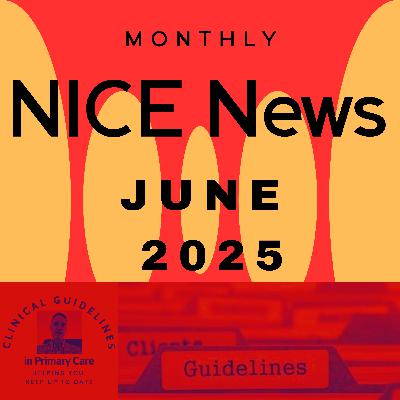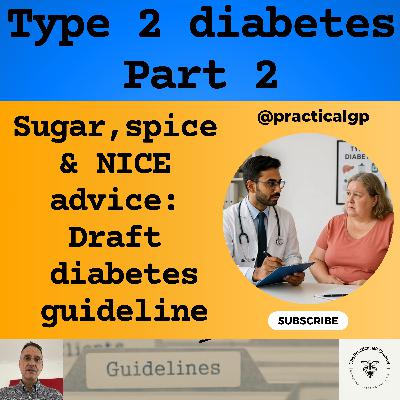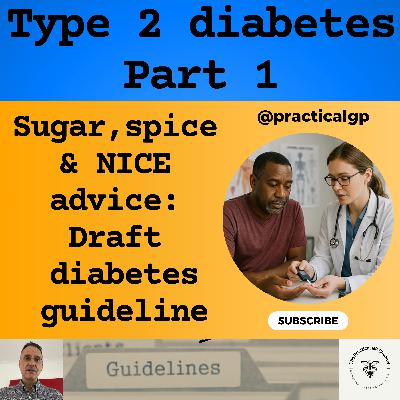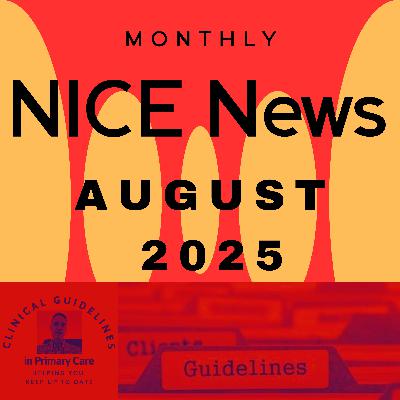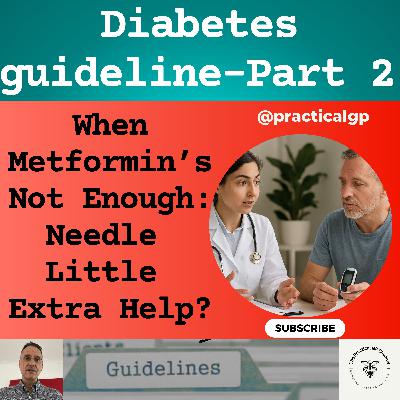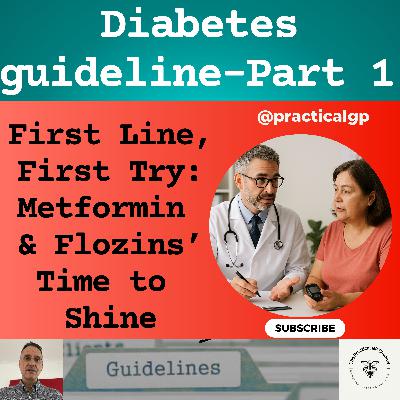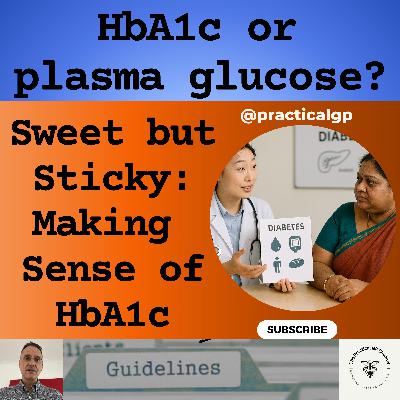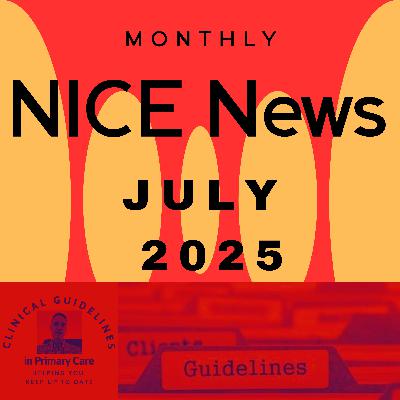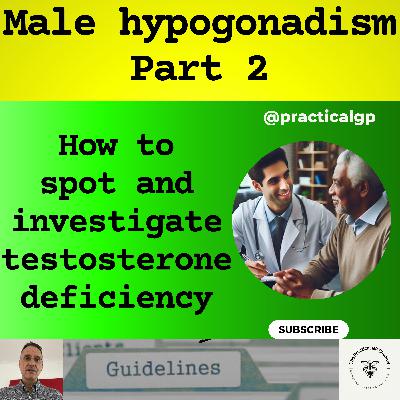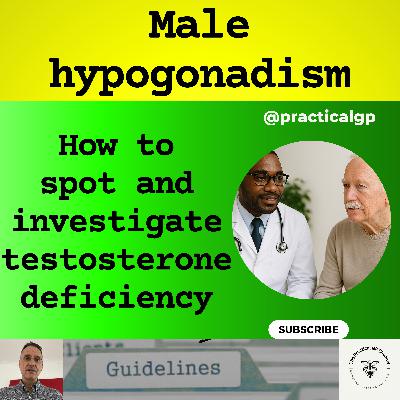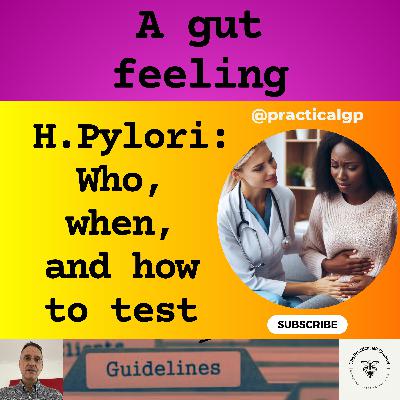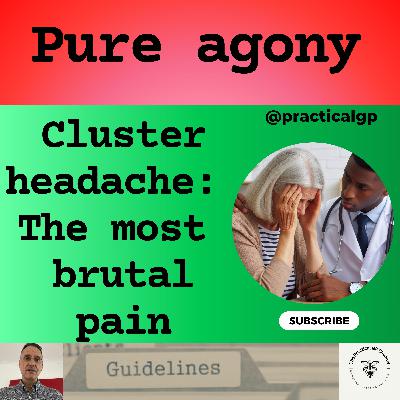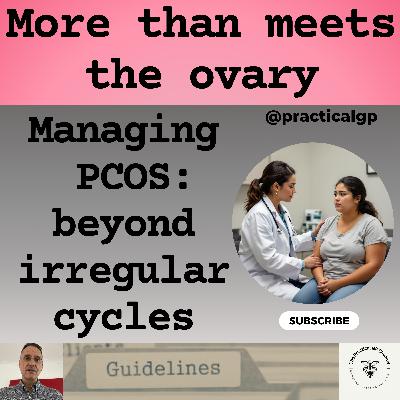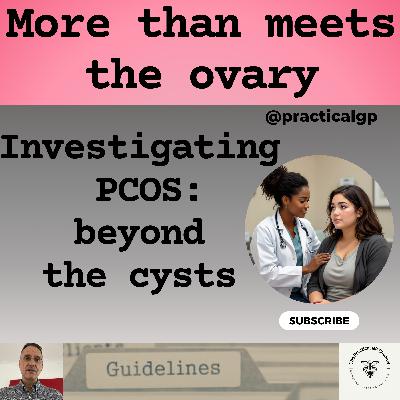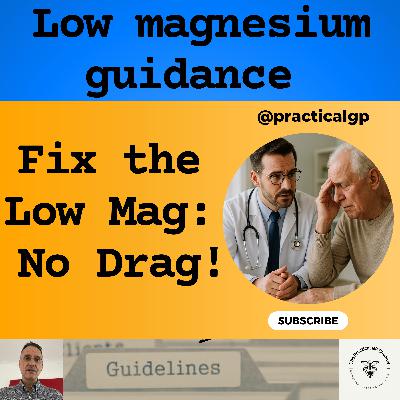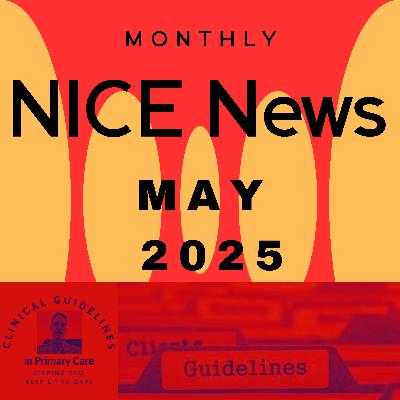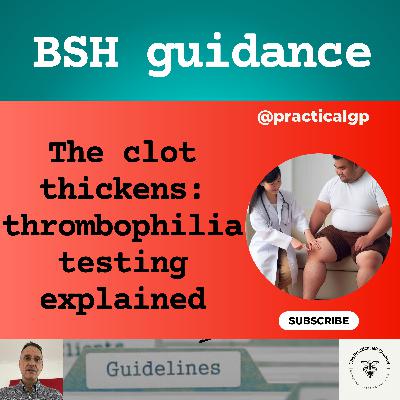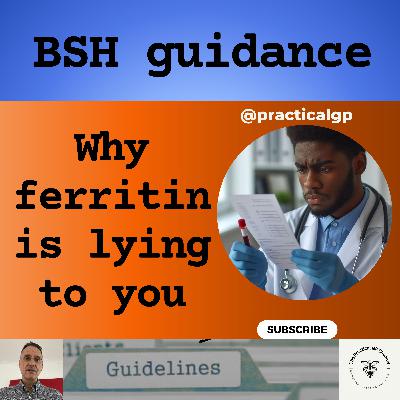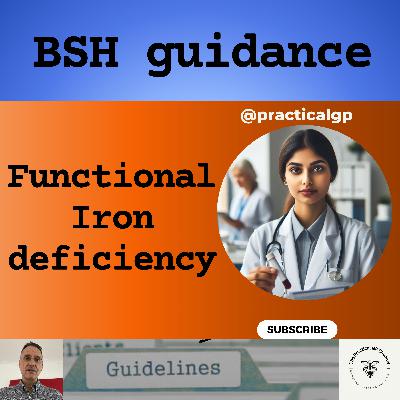Podcast - NICE News - June 2025
Description
The video version of this podcast can be found here:
· https://youtu.be/LumBxN-yFmI
This episode makes reference to guidelines produced by the "National Institute for Health and Care Excellence" in the UK, also referred to as "NICE". The content on this channel reflects my professional interpretation/summary of the guidance and I am in no way affiliated with, employed by or funded/sponsored by NICE.
NICE stands for "National Institute for Health and Care Excellence" and is an independent organization within the UK healthcare system that produces evidence-based guidelines and recommendations to help healthcare professionals deliver the best possible care to patients, particularly within the NHS (National Health Service) by assessing new health technologies and treatments and determining their cost-effectiveness; essentially guiding best practices for patient care across the country.
My name is Fernando Florido and I am a General Practitioner in the United Kingdom. In this episode I go through new and updated recommendations published in June 2025 by the National Institute for Health and Care Excellence (NICE), focusing on those that are relevant to Primary Care only.
I am not giving medical advice; this video is intended for health care professionals, it is only my summary and my interpretation of the guidelines and you must use your clinical judgement.
Disclaimer:
The Video Content on this channel is for educational purposes and not intended to be a substitute for professional medical advice, diagnosis, or treatment. Always seek the advice of your physician or other qualified health provider with any questions you may have regarding a medical condition. Never disregard professional medical advice or delay in seeking it because of something you have read or seen on this YouTube channel. The statements made throughout this video are not to be used or relied on to diagnose, treat, cure or prevent health conditions.
In addition, transmission of this Content is not intended to create, and receipt by you does not constitute, a physician-patient relationship with Dr Fernando Florido, his employees, agents, independent contractors, or anyone acting on behalf of Dr Fernando Florido.
Intro / outro music: Track: Halfway Through — Broke In Summer [Audio Library Release]
- Music provided by Audio Library Plus
- Watch: https://youtu.be/aBGk6aJM3IU
- Free Download / Stream: https://alplus.io/halfway-through
There is a podcast version of this and other videos that you can access here:
Primary Care guidelines podcast:
· Redcircle: https://redcircle.com/shows/primary-care-guidelines
· Spotify: https://open.spotify.com/show/5BmqS0Ol16oQ7Kr1WYzupK
· Apple podcasts: https://podcasts.apple.com/gb/podcast/primary-care-guidelines/id1608821148
There is a YouTube version of this and other videos that you can access here:
- The Practical GP YouTube Channel:
https://youtube.com/@practicalgp?si=ecJGF5QCuMLQ6hrk
The Full NICE News bulletin for June 2025 can be found here:
The updated clinical guideline Headaches in over 12s: diagnosis and management [CG150] can be found here:
· https://www.nice.org.uk/guidance/cg150
The MHRA advice on the use of topiramate can be found here:
Transcript
If you are listening to this podcast on YouTube, for a better experience, switch to the video version. The link is in the top right corner of the video and in the episode description.
Hello and welcome! I’m Fernando, a GP in the UK. In today’s episode, we’ll look at the NICE updates published in June 2025, focusing on what is relevant in Primary Care only.
We’ve got another short episode today, as there is just one updated clinical guideline relevant to us, the guideline on headaches in people over 12.
Right, let’s jump into it.
The update to the guideline makes only a very small change. NICE has changed the strength of recommendations on migraine prevention. Now, topiramate and propranolol are ‘consider’ options, alongside amitriptyline, whereas previously, only amitriptyline was a ‘consider’ option, and the other two were actively ‘offered’. This change better reflects the balance between benefits and harms with these three medicines.
And that is it. Given how straightforward this update is, let’s take the opportunity to review the overall management of migraine.
And we will start by saying that Headaches are among the most common neurological problems seen by GPs. They’re debilitating, and a major cause of time off work or school. They also represent a substantial burden on society.
We classify headache disorders as either primary or secondary. The cause of primary headaches isn’t well understood, so we group them by clinical pattern. The most common primary headache disorders are tension-type headache, migraine, and cluster headache.
Secondary headaches are due to underlying disorders. Examples include medication overuse headache, giant cell arteritis, raised intracranial pressure, and infection. Medication overuse headache often occurs in people already taking medication for a primary headache disorder.
The greatest health and social burden of headaches is caused by primary headaches and medication overuse headache.
Many people with headache don’t have an accurate diagnosis. Diagnosis can be difficult, and there’s often concern about possible underlying causes from both patients and healthcare professionals. By improving recognition of primary headache disorders, we’ll manage headaches better, improve quality of life, and reduce unnecessary investigations.
Now, let’s review the acute treatment of migraine with or without aura.
For this, we should offer combination therapy with an oral triptan and an NSAID, or an oral triptan and paracetamol depending on our clinical judgement.
For young people aged 12 to 17, we’ll consider a nasal triptan instead of an oral one. Currently, this is off-label in under-18s, except for nasal sumatriptan.
If someone prefers to take only one medicine, we’ll consider monotherapy with an oral triptan, NSAID, aspirin at 900 mg, or paracetamol, depending on their circumstances. And again, for 12 to 17-year-olds, we’ll consider a nasal triptan.
Because of the link with Reye’s syndrome, we should not offer aspirin to under-16s.
When prescribing a triptan, we’ll start with the lowest-cost option, and try alternatives if it’s not effective.
We should consider using an antiemetic alongside other acute migraine treatments, even if the person doesn’t have nausea or vomiting.
If oral preparations, or nasal preparations in young people, are ineffective or not tolerated, we’ll consider non-oral metoclopramide or prochlorperazine. If we do use one of these, and a non-oral NSAID or triptan hasn’t been tried, we’ll consider adding one.
We need to be aware of special warnings and precautions for metoclopramide and prochlorperazine as per the BNF, and we should discuss the benefits and risks with the patient.
At present, only buccal prochlorperazine is licensed for migraine. Other preparations are only licensed for nausea and vomiting.
Rimegepant (an oral calcitonin gene-related peptide [CGRP] inhibitor placed on or under the tongue) is recommended as an option for the acute treatment of migraine with or without aura in adults, only if:
- at least 2 triptans were tried and they did not work well enough or
- triptans were contraindicated or not tolerated, and NSAIDs and paracetamol were tried but did not work well enough.
We should not offer ergots or opioids for acute migraine treatment.
Now let’s turn to prophylactic treatment.
We will consider propranolol, topiramate, or amitriptyline to prevent migraine. This decision should follow a full discussion of benefits, risks, and suitability.
We will take into account the following factors:
- People with depression and migraine could be at an increased risk of using propranolol for self-harm so we should use ca

